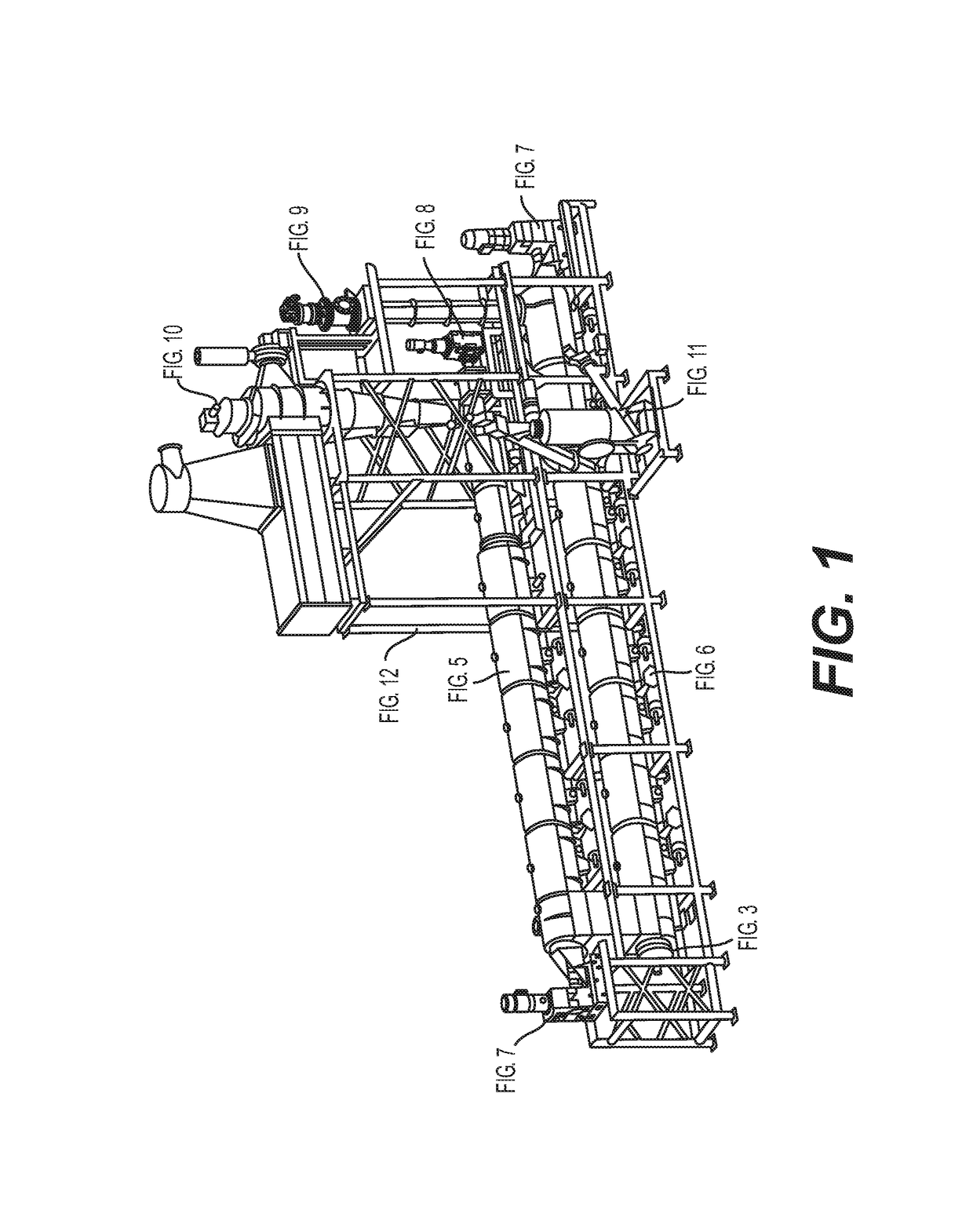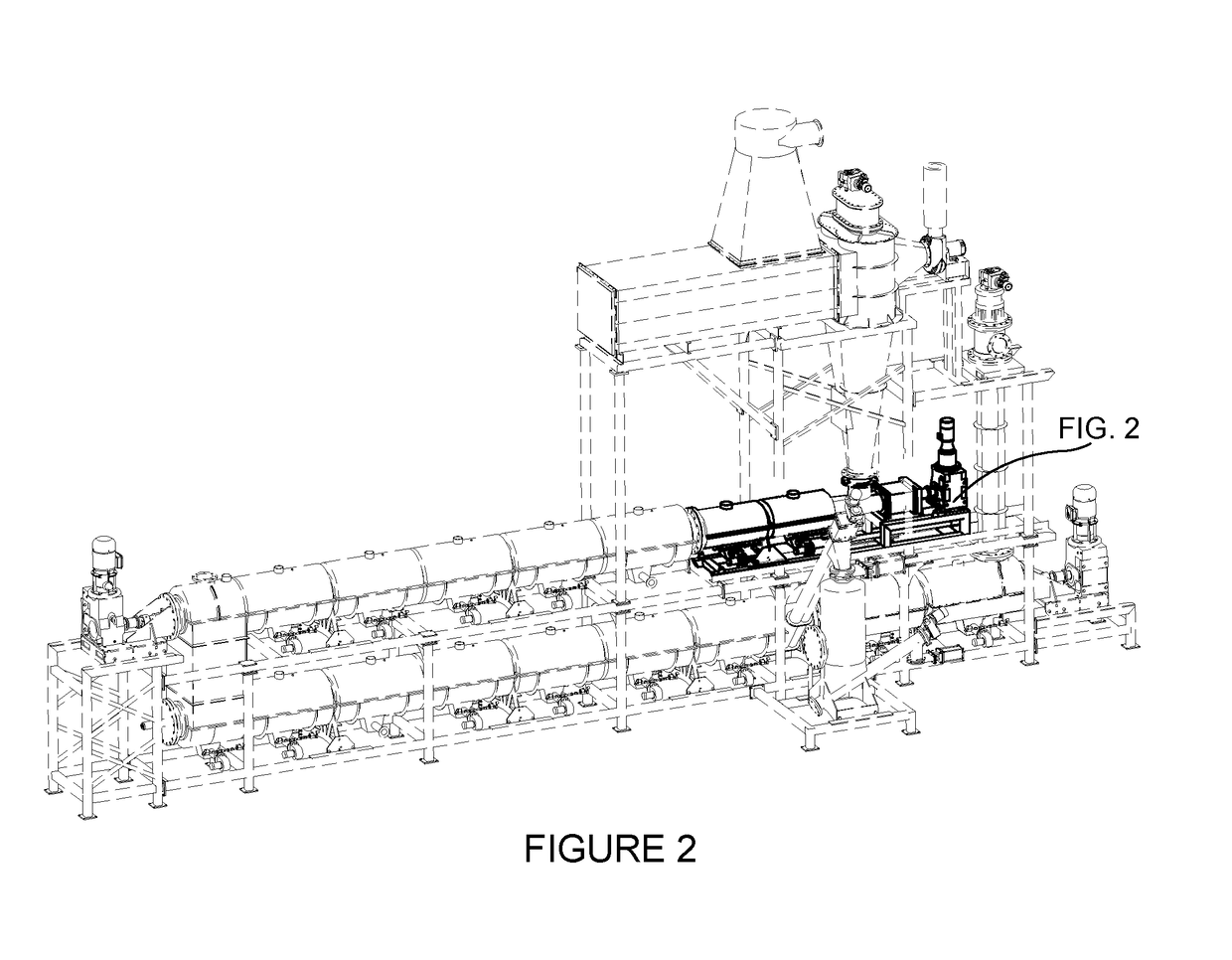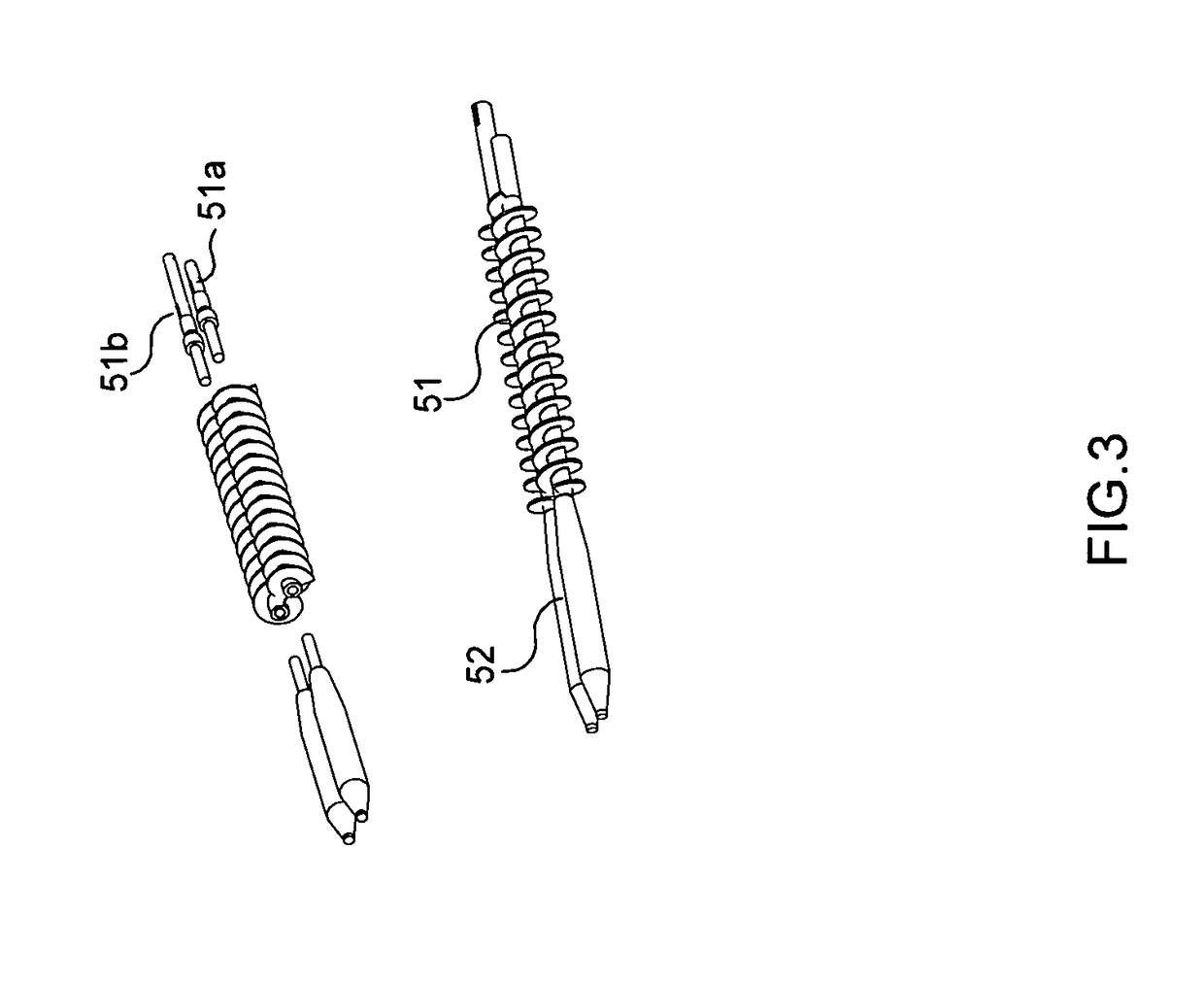Heated airlock feeder unit
a feeder unit and airlock technology, applied in the direction of supercritical condition processes, charging devices, products, etc., can solve the problems of not allowing molten materials, devices that cannot tolerate heat, and hot plastics that cannot tolerate molten materials, etc., to achieve less power consumption, high power consumption, and faster processing time
- Summary
- Abstract
- Description
- Claims
- Application Information
AI Technical Summary
Benefits of technology
Problems solved by technology
Method used
Image
Examples
Embodiment Construction
[0020]While the invention will be described and disclosed herein connection with certain preferred embodiments, the description is not intended to limit the invention to the specific embodiments shown and described here, but rather the invention is intended to cover all alternative embodiments and modifications that fall within the spirit and scope of the invention as defined by claims included herein as well as any equivalents of the disclosed and claimed invention.
[0021]The utility patent this application describes allows the application of back pressure to the feed material between the cold material and the heated, melting material (molten plastic). The main components of the Heated Airlock Feeder system are the drive, coupling, gearbox, augers, housing, clamshell burner boxes, expansion cart, and support frame. FIG. 1 depicts the entire assembly of the re-usable energy reactor system. FIG. 2 depicts the Heated Airlock Feeder that is part of the entire assembly of the re-useable ...
PUM
| Property | Measurement | Unit |
|---|---|---|
| length | aaaaa | aaaaa |
| pressure | aaaaa | aaaaa |
| diameter | aaaaa | aaaaa |
Abstract
Description
Claims
Application Information
 Login to View More
Login to View More - R&D
- Intellectual Property
- Life Sciences
- Materials
- Tech Scout
- Unparalleled Data Quality
- Higher Quality Content
- 60% Fewer Hallucinations
Browse by: Latest US Patents, China's latest patents, Technical Efficacy Thesaurus, Application Domain, Technology Topic, Popular Technical Reports.
© 2025 PatSnap. All rights reserved.Legal|Privacy policy|Modern Slavery Act Transparency Statement|Sitemap|About US| Contact US: help@patsnap.com



